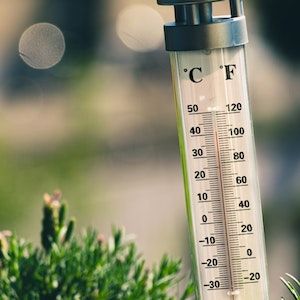Article
Rising Temperatures Detrimental to Renal Function in Heart Failure Outpatients
Author(s):
Temperatures changes between summer and the rest of the year correlated with the magnitude of decrease in renal function during summer.

Although the potential effects of global warming on human health continue to concern experts, the impact of increasing temperature on body homeostasis remains to be seen.
A set of new 20-year findings suggest the progressive rise in temperature is linked to detrimental effects on renal function during summer in patients with heart failure.
“Changes in temperatures between summer and the rest of the year correlated with the magnitude of the decrease in renal function during summer, likely because of worse dehydration with higher temperatures,” wrote lead author Alberto Aimo, Sant'Anna School of Advanced Studies.
These 20-year data were presented at the European Society of Cardiology Congress 2022 in Barcelona, Spain.
Almo and colleagues set out to determine the relationship between the trend of temperatures from 2002 to 2021 and renal function in heart failure outpatients. From electronic health records, the investigators collected all creatinine and estimated glomerular filtration rate (eGFR) values of heart failure outpatients followed at a single tertiary hospital in Spain.
They noted that eGFR was calculated through the CKD-EPI formula. Data on temperature were collected from the local municipality and derived from the Meteocat service. Temperatures from 2004 to 2005 were not available, thus these years were not part of the analysis.
Moreover, they defined summer as the timespan from June to September and calculated average values of creatinine and eGFR during summer and the rest of the same year, considering each patient and each year. Investigators averaged temperature values during summer and the rest of that year.
Within the data, 6,307 couples of average creatinine and eGFR values in summer and in the rest of the year were derived from 2,194 patients.
Across all the years (2002 - 2003 and 2006 - 2021), data show creatinine was slightly higher in summer than in the rest of the year (1.26 vs 1.21 mg/dL; P <.001) and eGFR was lower (65 vs 67 mL/min/1.73 m2; P <.001).
Further, investigators observed the temperatures in summer and the rest of the year increased gradually, but not linearly, from 2002 to 2001. Absolute and percent changes in median temperatures between summer and the rest of the year increased across years (r = .149, P = .001 and r = .144, P = .002, respectively).
Absolute and percent change termpatures between summer and the rest of the year displayed significant correlationsions with absolute and percent changes creatinine and eGFR following adjustments for variables including age, sex, heart failure therapies, and creatinine outside of summer.
Aimo concluded that the changes in temperatures between summer and the rest of the year influenced renal function in this patient population over the 20-year timespan.
The abstract, “Global warming, renal function and heart failure: a 20-year follow-up study,” was published at ESC 2022.





